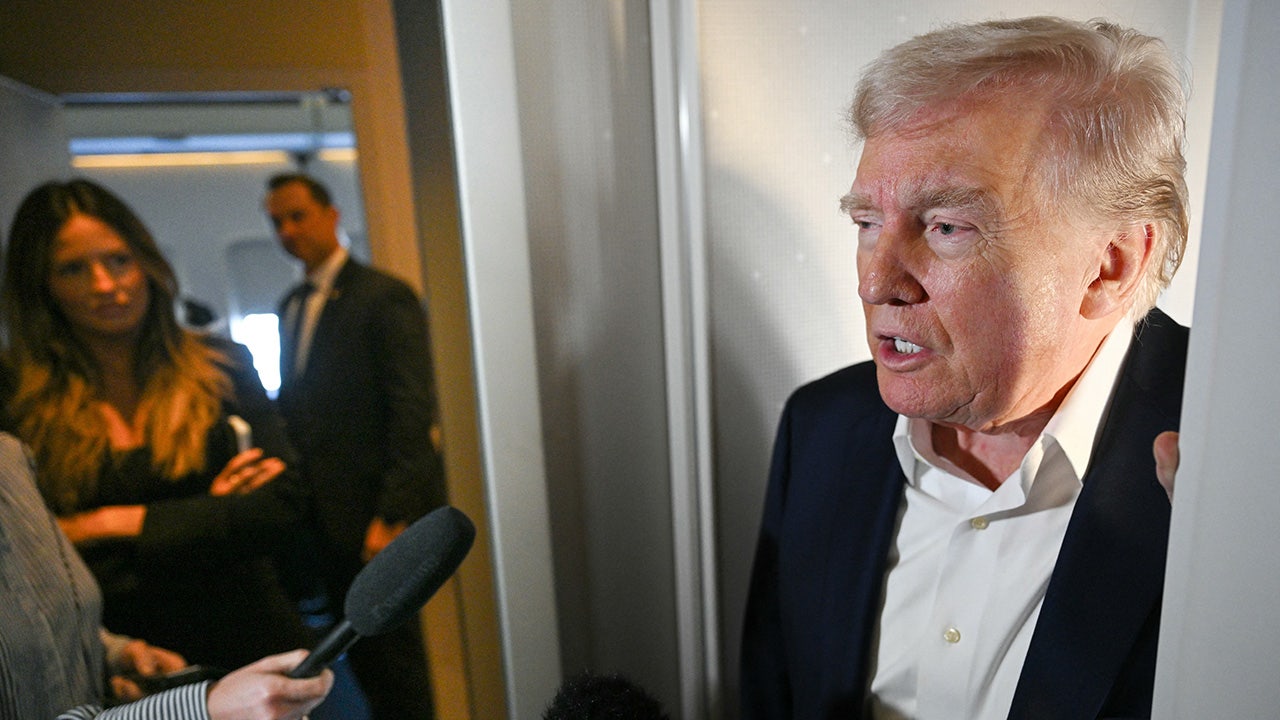Two weeks ago, Garmin announced it was launching a new subscription. Where the Garmin Connect app had previously offered everything from in-depth metrics and training plans for free, the beloved fitness tech company was now adding premium AI summaries, among other features, behind a paywall. In The Verge comments, my social media mentions, and the r/Garmin subreddit, cries about enshittification ensued.
Technology
Sunday Ticket jury orders NFL to pay fans $4.7 billion in damages
/cdn.vox-cdn.com/uploads/chorus_asset/file/24008751/acastro_STK099_NFL_01.jpg)
The NFL has been hit with a $4.7 billion verdict in a class action antitrust lawsuit filed on behalf of residential and commercial customers who paid for its Sunday Ticket package on DirecTV from 2011 through 2022.
Originally filed in 2015 by the Mucky Duck sports bar, the lawsuit claimed that the league and its teams had conspired to give DirecTV an illegal monopoly on out-of-market games until YouTube took it over, starting with the 2023 season. The plaintiffs noted that other leagues distributed live, out-of-market games through multiple providers instead of just one exclusive partner like the NFL and argued during the case that the setup not only inflated the price of Sunday Ticket but also forced viewers to pay for games during weeks when their preferred team wasn’t playing.
Courthouse News reports that during the trial, evidence showed that the NFL turned down bids for the package that would’ve made the offer cheaper, more flexible, and available to millions of additional customers. Before YouTube snagged the exclusive package that it now sells for $349 per year, the report says that an email from the NFL’s chief media and business officer showed ESPN proposed offering Sunday Ticket for $70 per year and allowing fans to buy a package for just one team.
After a three-week trial, ESPN reports the jury deliberated for almost five hours before reaching the decision. They awarded $96 million in damages to the bars and restaurants and $4.7 billion to customers, according to USA Today, which, if it stands, could be tripled under federal law.
A statement from the NFL given to multiple media outlets said the league would appeal the decision. Front Office Sports reports that US District Court Judge Philip S. Gutierrez, who dismissed the case in 2019 but later ruled it could proceed as a class action, could still throw out the verdict, and post-trial motions are set for a hearing on July 31st.

Technology
Teen goes from 10 nightly seizures to zero with brain implant

Imagine waking up seizure-free after years of suffering.
For 17-year-old Clara Fuller, this dream became reality thanks to groundbreaking brain implant technology.
Her journey from relentless seizures to a normal teenage life highlights the incredible potential of medical innovation.
STAY PROTECTED & INFORMED! GET SECURITY ALERTS & EXPERT TECH TIPS – SIGN UP FOR KURT’S ‘THE CYBERGUY REPORT’ NOW
Brain implant patient Clara Fuller (NeuroOne)
A life turned upside down
At just 13, Clara began experiencing uncontrollable seizures that baffled doctors. Initially misdiagnosed with anxiety and gallbladder issues, she even underwent unnecessary surgery before doctors finally identified the real culprit: epilepsy. But this wasn’t just any epilepsy; Clara had multifocal epilepsy, a rare and severe form that resists all medication.
“Every night I would have seizures, up to 10, and it was just miserable,” Clara said, recalling the years lost to her condition.
Her adolescence was marked by sleepless nights and constant medical challenges, robbing her of the simple joys of being a teenager. For years, there seemed to be no solution in sight.

Brain implant patient Clara Fuller (NeuroOne)
AI ENABLES PARALYZED MAN TO CONTROL ROBOTIC ARM WITH BRAIN SIGNALS
A revolutionary solution
Everything changed this past summer when Clara became the first pediatric patient to undergo a minimally invasive procedure at the Mayo Clinic using NeuroOne’s cutting-edge brain implant technology. The device, known as the NeuroOne OneRF Ablation System, is the first of its kind FDA-cleared technology designed for both diagnosing and treating neurological disorders in one procedure.
“It took them maybe 30 minutes, and the longest part was setting up,” Clara said about the procedure that transformed her life.
Dr. Brin Freund, a neurologist at the Mayo Clinic in Jacksonville, Florida, explained Clara’s case in more detail:
“Clara has had a history of seizures that, unfortunately, were uncontrolled with medications. In these cases, surgery may be the only option to reduce and potentially cure the seizure disorder. After a thorough diagnostic evaluation, our group at Mayo Clinic Florida recommended implantation of electrodes (stereoelectroencephalography, or stereo EEG) in the brain to determine where her seizures were originating, in order to develop a surgical plan to treat them.
“Clara and her family were very much in agreement with this plan, given how debilitating her seizures had been and the failure to control her seizures with medications. Clara underwent implantation of NeuroOne electrodes in order to record seizure activity to determine where her seizures were arising from and then to potentially treat them by performing radiofrequency ablation in these areas.”
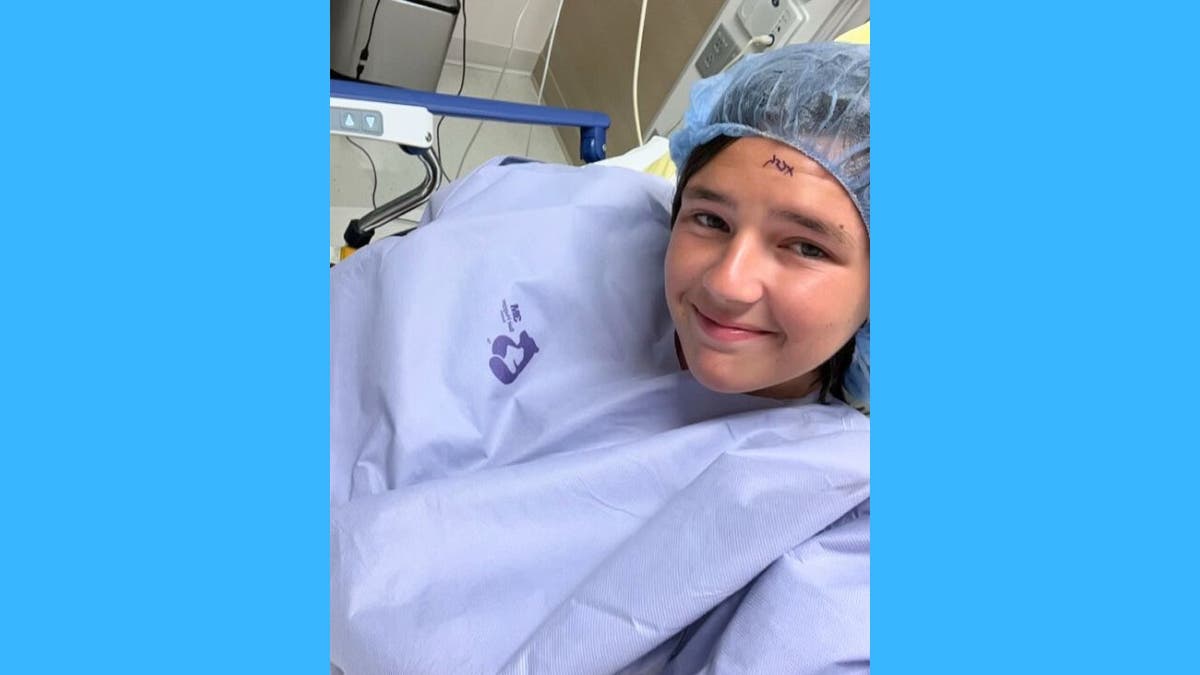
Brain implant patient Clara Fuller (NeuroOne)
HOW ELON MUSK’S NEURALINK BRAIN CHIP WORKS
How NeuroOne’s dual-function system works
The NeuroOne system uses ultra-thin electrodes to pinpoint the exact source of seizures in the brain. Once identified, it employs radiofrequency energy to disrupt abnormal electrical signals in problematic brain tissue without permanently damaging surrounding areas. This dual functionality, diagnostic and therapeutic, is what sets it apart from traditional methods that require two separate surgeries.
NeuroOne CEO Dave Rosa explained:
“What separates our technology from others is that our device can be used for both the diagnostic part – finding the area of the brain – and then ablating or destroying that tissue, all in the same hospitalization.”
He added that this approach minimizes patient risk by reducing the number of procedures and hospitalizations required.
Freund emphasized this advantage:
“Stereo EEG electrodes provide the ability to localize seizure onset with excellent precision as long as the electrode implantation is planned thoroughly and accurately. With regards to the NeuroOne electrodes, they allow for radiofrequency ablation to be performed while the electrodes are still implanted without having to remove them. We can therefore not only localize the seizure onset but provide a surgical treatment and potentially avoid a second and potentially more extensive or invasive procedure such as a craniotomy and resection of brain tissue.
“The NeuroOne electrodes allow us to control the conditions of the ablative procedure. They also provide us more confidence that the electrodes will withstand the duration of the implantation, which would include recording seizure data, performing the ablation and then recording more data after the ablation to ensure that the treatment achieved the intended goal.”
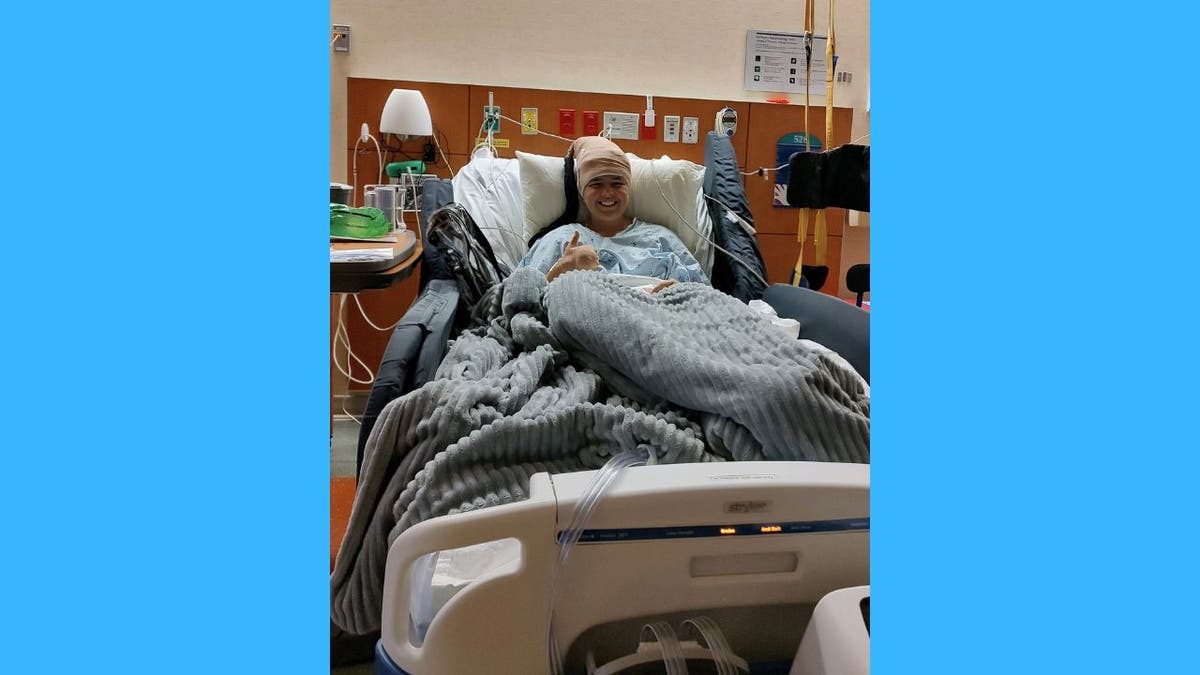
Brain implant patient Clara Fuller (NeuroOne)
THIS MIND-READING TECH USING AI CAN CONVERT BRAIN ACTIVITY INTO TEXT
The results
The results have been nothing short of life-changing for Clara. Since undergoing the procedure, she has been completely seizure-free. She’s now back to enjoying school, sports and uninterrupted sleep – things most people take for granted but were once unimaginable for her.
According to Freund:
“Regarding the implantation itself, she did very well and there were no adverse effects. The first ablation did not cause any acute complications. We then performed a second ablation a few days later after data was recorded from the electrodes demonstrating ongoing seizure activity to ensure that her seizures would not recur. This was also well-tolerated without complications. We have now followed up months after the electrodes were removed and there have been no signs of ill effects due to the implantation or the ablations. She has been seizure-free since the ablation and has done amazingly well.”
Clara’s story offers hope for others living with drug-resistant epilepsy, which affects about one-third of the 3 million Americans with epilepsy. According to Rosa, “The desire to expand ablation therapy to patients suffering from seizures that do not respond to drug therapy was our driving force.”
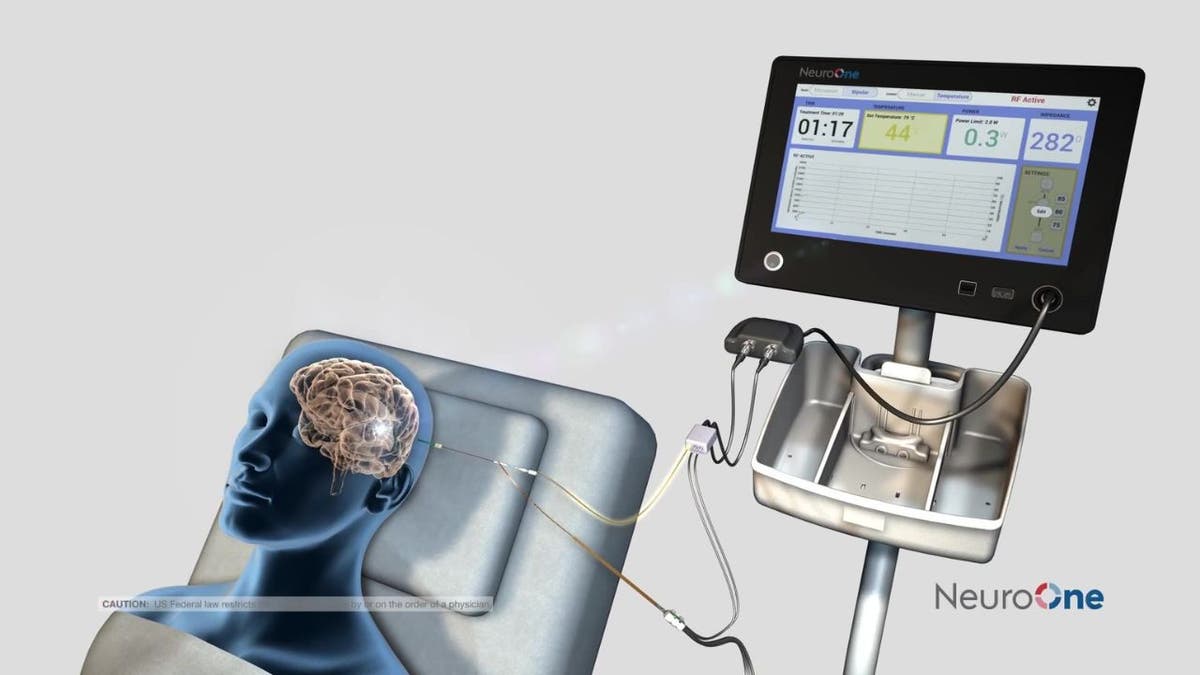
NeuroOne One RF Ablation System (NeuroOne)
A broader impact on medicine
NeuroOne’s innovative technology isn’t just limited to epilepsy treatment. The company plans to expand its applications to other areas, such as pain management for facial pain and lower back pain, using the same RF ablation technology. Rosa also sees potential for treating neurological conditions beyond epilepsy:
“Pain management appears to be the largest opportunity outside of brain ablation.”
Dr. Freund believes this technology could dramatically improve long-term care for pediatric epilepsy patients like Clara:
“This technology could allow for limiting the number of procedures that are required to treat drug-resistant focal epilepsy and also provide immediate feedback as to whether or not a surgical treatment was effective. This could potentially reduce the risk of adverse events by limiting the number of times that a brain surgery would be needed. This technology also allows us to access deeper parts of the brain to provide surgical treatment.”
He added that the impact may soon be widespread:
“In our practice, we are now using these electrodes in every case that requires Stereo EEG for treatment of drug-resistant epilepsy. I think as these types of electrodes are used at more centers and they get more experience, there would be no reason not to use them.”
SUBSCRIBE TO KURT’S YOUTUBE CHANNEL FOR QUICK VIDEO TIPS ON HOW TO WORK ALL OF YOUR TECH DEVICES
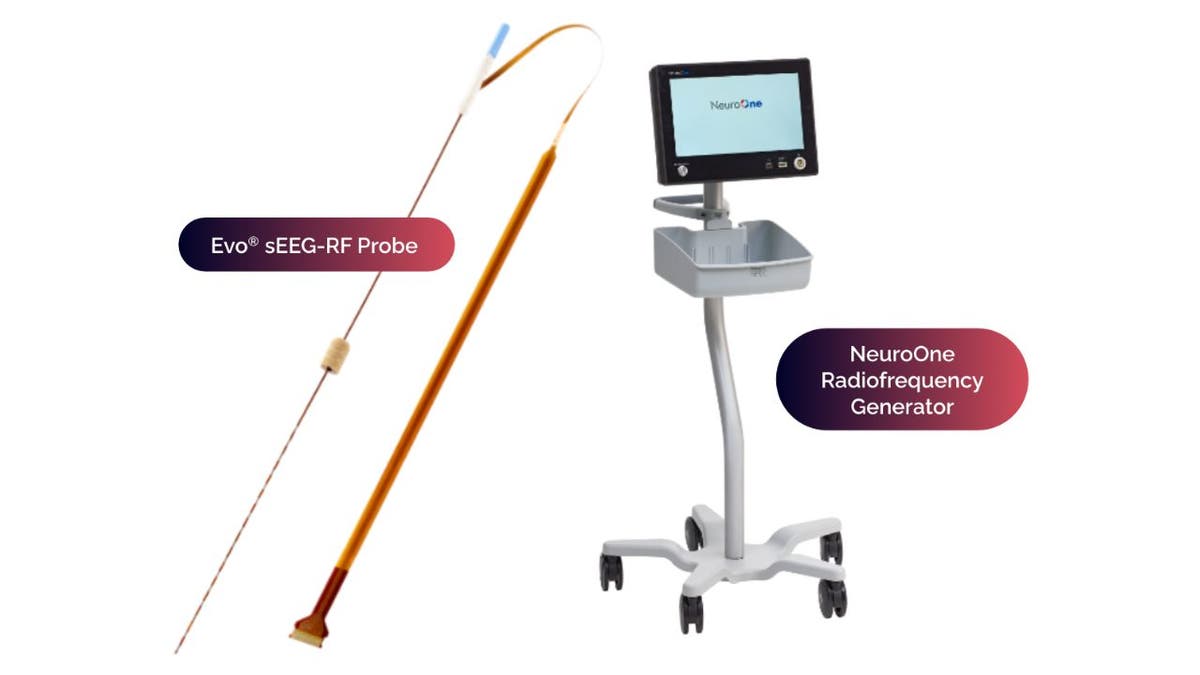
NeuroOne One RF Ablation System (NeuroOne)
Kurt’s key takeaways
Clara’s remarkable journey from a life plagued by seizures to one of freedom and normalcy underscores how advancements in medical technology are transforming lives in profound ways. Her story offers hope for those struggling with drug-resistant epilepsy and other neurological conditions.
As technology continues to push boundaries, we can expect even more groundbreaking treatments to emerge, offering new possibilities for those who once felt limited by their conditions. In the words of NeuroOne’s CEO, this revolutionary technology promises a future where fewer surgeries and safer outcomes become the norm.
If you or someone close to you had epilepsy, would you consider trying innovative treatments like this? Why or why not? Let us know by writing us at Cyberguy.com/Contact.
For more of my tech tips and security alerts, subscribe to my free CyberGuy Report Newsletter by heading to Cyberguy.com/Newsletter.
Ask Kurt a question or let us know what stories you’d like us to cover.
Follow Kurt on his social channels:
Answers to the most-asked CyberGuy questions:
New from Kurt:
Copyright 2025 CyberGuy.com. All rights reserved.
Technology
Buckle up for more subscriptions

Then, earlier this week, Garmin-competitor Polar announced that it, too, was launching a premium subscription called Polar Fitness Plan. There was no AI component, but in a nutshell, Polar is now asking long-time users to pay for training plans that it had previously, in some capacity, offered for free.
The march toward subscriptions, particularly in the wearable space, didn’t crop up overnight. You could trace it back to Apple’s infamous services event in 2019 (if not earlier), when the company made a marked shift from hardware to services. But Garmin and Polar’s examples stand out. In the world of premium rugged smartwatches, long-time fans often accepted the several hundreds — sometimes thousands — of dollars for their hardware because they didn’t paywall features.
“Garmins have always felt a little on the high side price wise, but it was justifiable as there was no ongoing cost,” Threads user aaronpfisher told me when I asked Garmin loyalists how they felt. “Strava have taken more and more and hidden behind a paywall and that’s how I fear this will end up too.”
“Customers are rightly worried that all of the best features will be behind a paywall,” says subscriptions expert Robbie Kellman Baxter, author of The Membership Economy and The Forever Transaction. “They have told customers not to worry — that the base software will always be available for free. But they have not been clear about whether or how much they will continue to improve the free version.”
It’s an understandable frustration. Generally, Baxter says, customers are resistant to subscribing to access features or their variations if they’ve previously received them for free. That’s borne out in recent examples. Oura Health, maker of the popular smart ring, faced immense backlash upon launching a subscription alongside Oura Ring Gen 3 in 2021. Recently, popular tech YouTuber Marques Brownlee, better known as MKBHD, also incurred the internet’s wrath when he introduced a subscription to his wallpaper app. Likewise, BMW also received heat when it tried to add a monthly subscription for heated seats in its cars.
But that anger might be something consumers have to get used to in the coming months. Increasingly, hardware sales no longer keep the lights on — and President Trump’s tariffs will only add fuel to the subscription wars.
Regardless of what the final tariff rates are, experts who have spoken to The Verge largely agree that gadget prices — and the price of everything else — will rise. Should nothing change, it might spur short-term buying, as consumers rush to snap up devices before price hikes. It may lead to people holding onto their devices longer and buying less in the mid-to-long term. In that scenario, charging for services becomes the most obvious way to keep the lights on.
“If hardware becomes more expensive, software will be a way for hardware companies to grow.”
“If hardware becomes more expensive, software will be a way for hardware companies to grow,” says Baxter, noting that Trump’s tariffs will push companies to focus on accelerating software and software-as-a-service subscriptions. “It also might change how they manufacture their products—designing for long-term stability and software flexibility. If companies designed hardware to last twice as long, and to deliver much of the value through software upgrades, they might be able to funnel more of their revenue through the ‘software’ side than the ‘hardware’ side.”
The question is whether companies can convince their customers the cost is worth it. Simply slapping on new features without thinking of the value they can provide could alienate loyal users. In fitness tech, athletes have largely decried Strava’s attempt to add value to its subscription through AI summaries, describing the feature as useless. (Or, more cuttingly, like “reading a book report a third-grader wrote.”)
Either way, it doesn’t look like there’ll be any relief for subscription fatigue any time soon.
Technology
Can't find your Android phone? Here's what to do to track it down

You’re about to run out of the house, and suddenly your phone is nowhere to be found. Or you get in your car after being at the store, and your phone’s not in your bag.
Does this scenario sound familiar? Whether you’re someone who loses or misplaces your phone frequently or just once in a blue moon, we’ve all been there.
Unfortunately, finding your phone is not so easy. Perhaps you try calling it, but your ringer is on silent. Or it fell into the cracks somewhere, and you can’t see the screen light up. Luckily, there’s another way to find your Android phone if you’re unsure where you last left it.
iPhone users, be sure to check out four ways to find your lost iPhone, with and without other devices.
STAY PROTECTED & INFORMED! GET SECURITY ALERTS & EXPERT TECH TIPS – SIGN UP FOR KURT’S ‘THE CYBERGUY REPORT’ NOW
A man looking at his smartwatch (Kurt “CyberGuy” Knutsson)
1. Ping your phone using your smartwatch
One way to find your Android phone if you’re not quite sure where you last left is to rely on your smartwatch, which you can use to ping your phone. This feature sends a signal to your phone, making it ring loudly even if it’s on silent, helping you locate it quickly.
- Open the watch app: On your Android watch (such as a Samsung Galaxy watch), swipe down to access the quick settings menu.
- Find the Find My Phone icon: Look for an icon that resembles a phone with sound waves around it.
- Ping your phone: Tap the icon, and your phone will start ringing, making it easier to find.
2. Use your Google Account to ‘Find My Device’
If you have access to a device connected to your Google account, such as a laptop, tablet or another smartphone, you can use it to find your Android phone. This feature is part of Google’s ecosystem and allows you to locate your phone through the Google Play Store or any web browser.
WHAT IS ARTIFICIAL INTELLIGENCE (AI)?
To use Google’s Find My Device feature, a few things must have been set up on your Android phone before it was lost:
- Your phone must be signed into your Google account
- Location Services must be turned on
- The Find My Device feature must be enabled:Go to Settings → Security → Find My Device and ensure it’s on
- Your phone must be powered on and connected to mobile data or Wi-Fi for real-time tracking
- (Optional but helpful) Your device should be visible on Google Play. You can check this at play.google.com/settings and ensure visibility is turned on
If these conditions are met, you can use any device (such as a laptop, tablet or another phone) connected to the internet to find your lost Android phone:z
- On any device, open a web browser or the Google Play Store app
- Log in with the same Google account linked to your lost phone
- In the web browser, go to Find My Device. If using the Google Play Store, open the menu and select Find My Device
- Google will display your phone’s last known location on a map
- You can also use options to make it ring, lock it or erase its data to protect your personal information
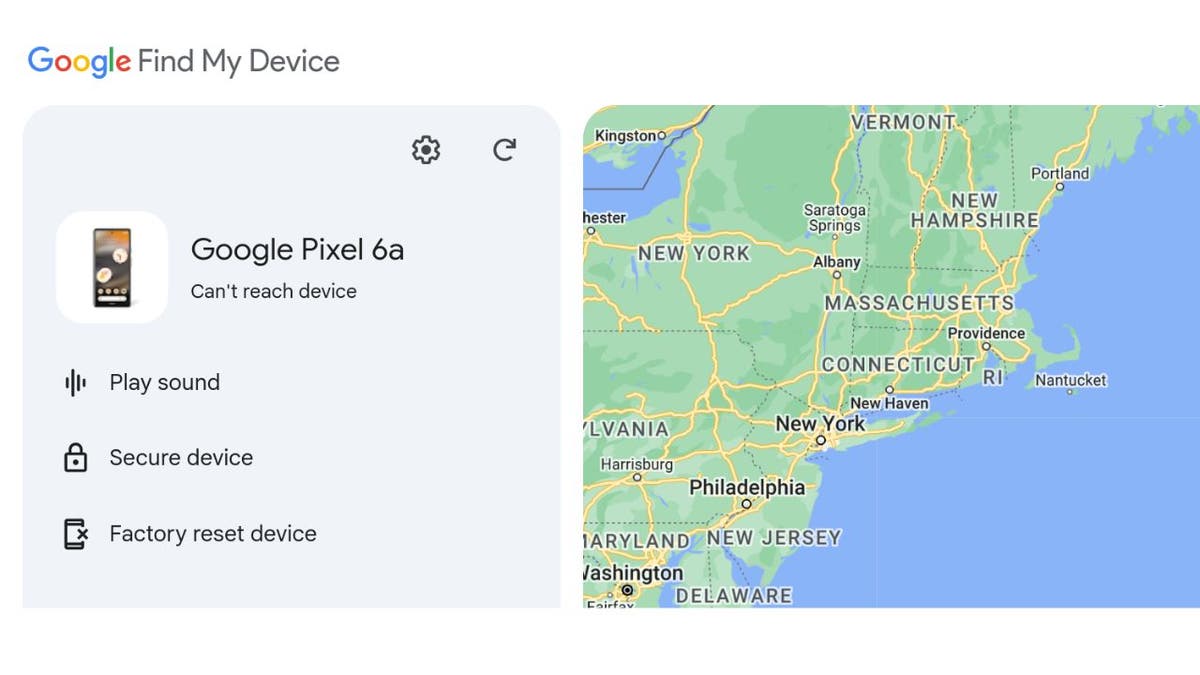
Find My Device map (Google)
LOOKING FOR MORE WAYS TO LOCK DOWN YOUR ANDROID? HERE’S HOW TO DO IT
3. Utilize the old-school method
It may go without saying, but with all this convenient technology, sometimes the tried-and-true methods are easily forgotten. If you happen to lose your Android, consider retracing your steps: call the places you visited within the last few hours, ask employees if anyone found their phone, and check all the nooks and crannies in your car, bag, etc. You can also try calling your phone to see if anyone answers, and if they’re honest, you can find a safe, public place to meet up. Also, if you happen to lose your phone in a ride-share, those apps have methods to communicate with the driver in order to get your phone back.
BEST ANTIVIRUS FOR ANDROIDS – CYBERGUY PICKS 2025
What to consider if you lose or misplace your Android
Anyone can lose their phone at some point. Therefore, be careful what apps and security you have on your phone. For instance, if you have banking apps, notes with your passwords listed or private messages and emails, you’ll want to have an extra layer of security on your phone, like a keypad lock or biometric security. This way, if your phone is placed in the wrong hands, they can’t access your sensitive data.
Even if you have those security features on your Android, if you call your phone and someone happens to answer, be wary of what information you give them. Though one would hope the finder would be honest, you never know. They could set you up for a scam, so trust your gut.
Other tips to protect your Android phone: Essential accessories
To minimize the risk of damage happening to your Android phone, whether that damage is from when you lost or misplaced it, it may be worth investing in some protective gear and tools. Here are some must-haves for any smartphone owner.
1. Install strong antivirus software to keep your Android safe
The best way to safeguard yourself from malicious links that install malware, potentially accessing your private information, is to have antivirus software installed on all your devices. This protection can also alert you to phishing emails and ransomware scams, keeping your personal information and digital assets safe. Get my picks for the best 2025 antivirus protection winners for your Windows, Mac, Android and iOS devices.
2. Invest in a durable phone case
A sturdy phone case can prevent damage from drops, bumps and scratches. Consider cases from reputable brands offering shock absorption, reinforced corners and raised edges to protect the screen and camera. Look for materials such as silicone, TPU or hybrid constructions that combine multiple layers for enhanced durability. Additionally, some cases come with added functionalities like kickstands or cardholders, making them both protective and practical.
3. Opt for a high-quality charger
Using a high-quality charger ensures your phone charges efficiently and safely. Look for chargers that offer fast charging capabilities and are certified by your phone’s manufacturer. Plus, investing in a reliable charger can save you from the frustration of slow charging times and potential damage to your device. It’s always worth having a dependable charger on hand, especially for those busy days when you need a quick power boost.
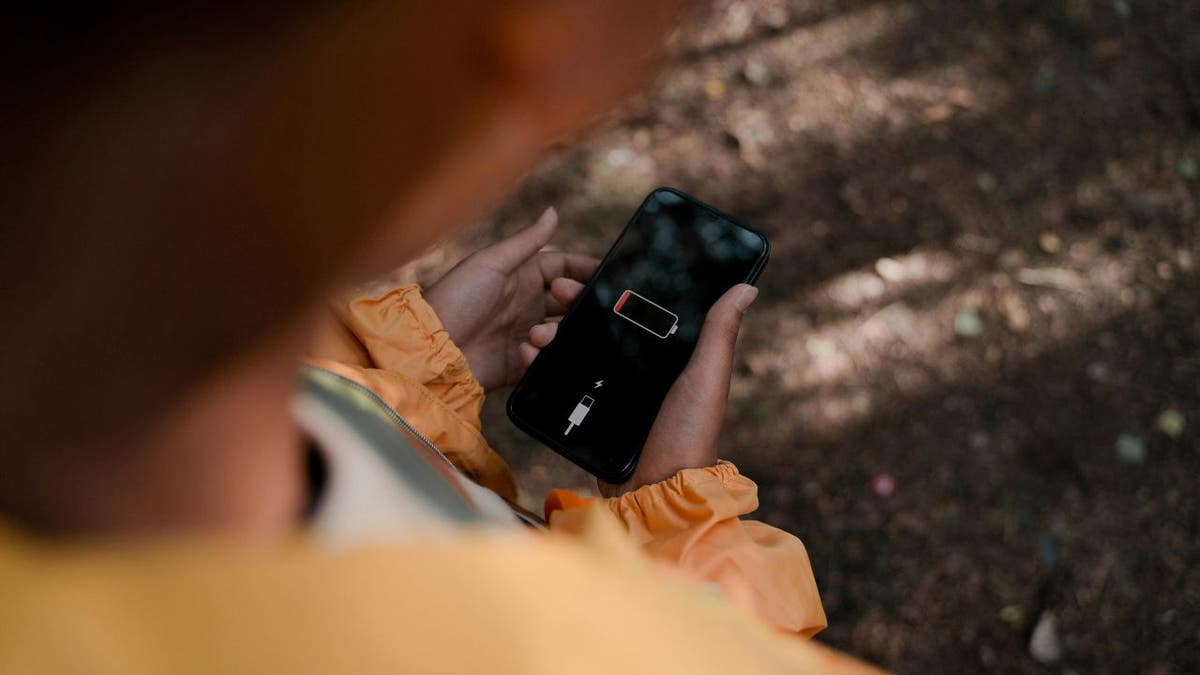
A woman with a dead Android (Kurt “CyberGuy” Knutsson)
UPDATED ANDROID MALWARE CAN HIJACK CALLS YOU MAKE TO YOUR BANK
4. Consider a privacy screen
Privacy screens can prevent prying eyes from viewing your phone’s display, adding an extra layer of security. They are especially useful in public places. Imagine being on a crowded train or in a busy cafe, these screens can give you peace of mind knowing your personal information stays private. Plus, they can also reduce glare, making it easier to see your screen in bright environments.
BEST ACCESSORIES FOR YOUR ANDROID
Kurt’s key takeaways
Losing your phone can be a frustrating experience, but with the right strategies and tools at your disposal, you can recover it quickly and efficiently. Whether you rely on your smartwatch to ping your device, utilize Google’s “Find My Device” feature or revert to the classic method of retracing your steps, there are multiple ways to help you locate your Android phone. So, the next time you find yourself frantically searching for your phone, you’ll be equipped with the knowledge and tools to handle the situation with confidence.
What strategies or tools have you found most effective for locating your lost phone, and do you have any personal stories to share about your experiences with misplaced devices? Let us know by writing us at Cyberguy.com/Contact.
For more of my tech tips and security alerts, subscribe to my free CyberGuy Report Newsletter by heading to Cyberguy.com/Newsletter.
Ask Kurt a question or let us know what stories you’d like us to cover.
Follow Kurt on his social channels:
Answers to the most-asked CyberGuy questions:
New from Kurt:
Copyright 2025 CyberGuy.com. All rights reserved.
-

 News1 week ago
News1 week agoSupreme Court Rules Against Makers of Flavored Vapes Popular With Teens
-

 News1 week ago
News1 week agoNYC Mayor Eric Adams' corruption case is dismissed
-

 Technology1 week ago
Technology1 week agoHere’s how you can preorder the Nintendo Switch 2 (or try to)
-

 World1 week ago
World1 week ago‘A historic moment’: Donald Trump unveils sweeping ‘reciprocal’ tariffs
-

 Politics1 week ago
Politics1 week agoFBI flooded with record number of new agent applications in Kash Patel's first month leading bureau
-

 World1 week ago
World1 week agoCommission denies singling out NGOs in green funding row
-

 Business1 week ago
Business1 week agoAmazon Said to Make a Bid to Buy TikTok in the U.S.
-

 Health1 week ago
Health1 week agoFederal Health Workers Make Up Less Than 1% of Agency Spending

